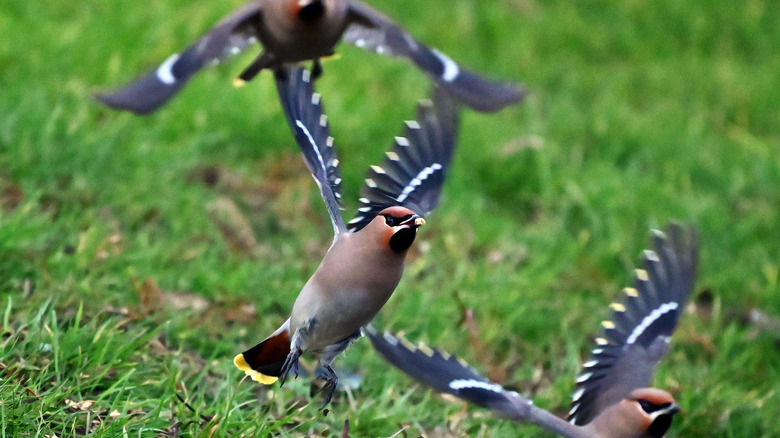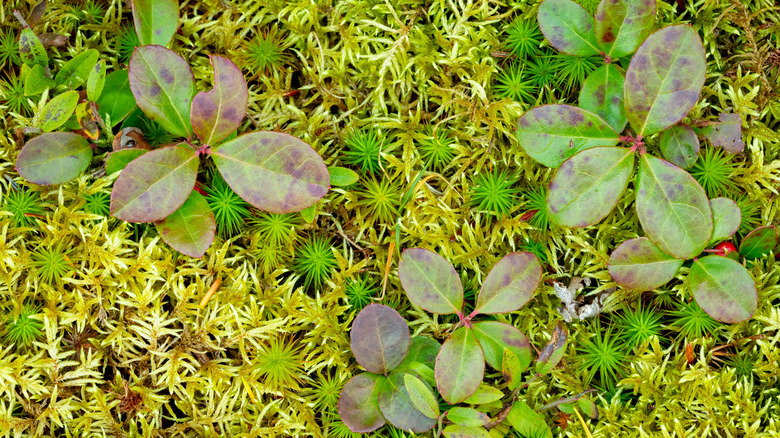The Red Berry Ground Cover That'll Bring Beautiful Birds To Your Yard
Wildlife lovers in the eastern half of the U.S. who haven't heard of partridge berries (Mitchella repens) are in for a treat. Delectable to doves, turkeys, waxwings, and more, these red berries with evergreen leaves lend a splash of color to the winter landscape and are a lovely way to attract birds to your garden. Partridge berries grow on leafy vines that spread slowly into a lush ground cover. Deep green and glossy leaves, white blooms, and scarlet fruit are beautiful magnets for birds and humans alike.
Rather than climbing, the plant spreads by taking root from nodes along the stem, and it gives birth to colonies that cover substantial amounts of ground. It is suited for states from Maine to Texas and everything in between. Not only will birds flock to the scene once you plant these berries, but they also lure deer, raccoons, and foxes in for a feeding.
Once the plant is established, partridge berries are so easy to care for that it's tempting to tear up the lawn — or at least part of it — and replace it with this colorful beauty. With the combination of leaves that bring you green in January and berries that sustain wildlife while everything else is dormant, this creeping ground cover is an attractive option to consider for your outdoor space.
What are the benefits of growing partridge berries?
Transform your yard into an oasis for birds, mammals, and pollinating insects. By providing a food source for birds and other wildlife, know that you are doing a service to animals that are losing their food sources due to habitat loss. Constant incursions into wild spaces are a substantial threat to many species. Your patch of partridge flowers and berries will have the potential to bring more pollinators to your yard and sustain creatures with its nutrient-packed fruits.
Subbing partridge berries for part of your lawn is an eco- and wallet-friendly way to cut down on maintenance costs. After your swath of partridge berries settles in, there's no mowing to pump pollutants into the air. Plus, the plant is moderately drought-tolerant, which could give you considerable water savings compared to popular bluegrass turf. Partridge berries don't require work besides clearing away leaf litter and other debris, making this plant a wonder for busy gardeners.
What are the challenges of growing partridge berries?
Despite their cold hardiness, partridge berries have a few delicate characteristics that you should keep in mind before making them part of your landscape. Michella repens can really only stand in as an ornamental lawn alternative. It doesn't do well when it's disturbed, so it's not a good option if you have pets or children who use your yard as a play space. Instead, check out our 11 eco-friendly lawn alternatives that could be a better fit for your family.
Rather than replacing a full lawn, it may be better to welcome partridge berry to just part of a yard. It grows slowly and takes time to get established, and it doesn't grow well from seed. Lastly, partridge berry is best for shady areas. It's a native woodland perennial, and if your yard sits in full sun, this may not be the ground cover for you.


